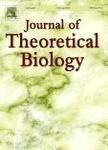版权所有:内蒙古大学图书馆 技术提供:维普资讯• 智图
内蒙古自治区呼和浩特市赛罕区大学西街235号 邮编: 010021

作者机构:Univ Bristol Sch Math Bristol BS8 ITW Avon England Univ Bristol Sch Expt Psychol Priory Rd Bristol BS8 1TU Avon England Univ Bristol Sch Biol Sci Tyndall Ave Bristol BS8 1TQ Avon England
出 版 物:《JOURNAL OF THEORETICAL BIOLOGY》 (理论生物学杂志)
年 卷 期:2018年第454卷
页 面:357-366页
核心收录:
学科分类:0710[理学-生物学] 07[理学] 09[农学]
基 金:European Research Council UK Engineering and Physical Sciences Research Council [EP/I032622/1] EPSRC [EP/I032622/1] Funding Source: UKRI
主 题:Optimal foraging strategy Predation Starvation Energy reserves Stochastic dynamic programming
摘 要:Most optimal foraging models assume that the foraging behaviour of small birds depends on a single state variable, their energy reserves in the form of stored fat. Here, we include a second state variable-the contents of the bird s gut to investigate how a bird should optimise its gut size to minimise its long-term mortality, depending on the availability of food, the size of meal and the bird s digestive constraints. Our results show that (1) the current level of fat is never less important than gut contents in determining the bird s survival;(2) there exists a unique optimal gut size, which is determined by a trade-off between the energetic gains and costs of maintaining a large digestive system;(3) the optimal gut size increases as the bird s digestive cycle becomes slower, allowing the bird to store undigested food;(4) the critical environmental factor for determining the optimal gut size is the mass of food found in a successful foraging effort (meal size). We find that when the environment is harsh, it is optimal for the bird to maintain a gut that is larger than the size of a meal. However, the optimal size of the gut in rich environments exactly matches the meal size (i.e. the mass of food that the optimal gut can carry is exactly the mass of food that can be obtained in a successful foraging attempt). (C) 2018 Published by Elsevier Ltd.